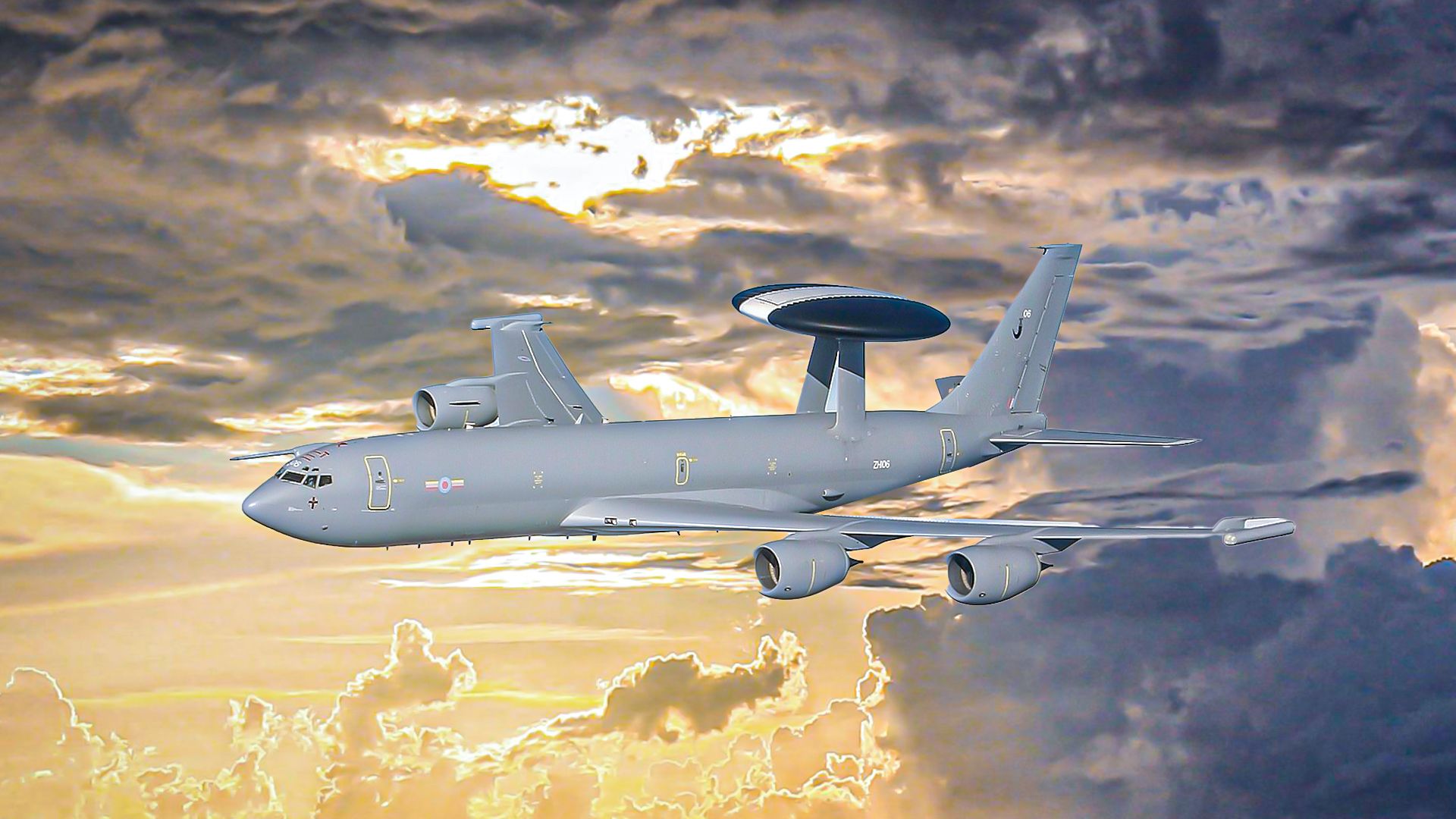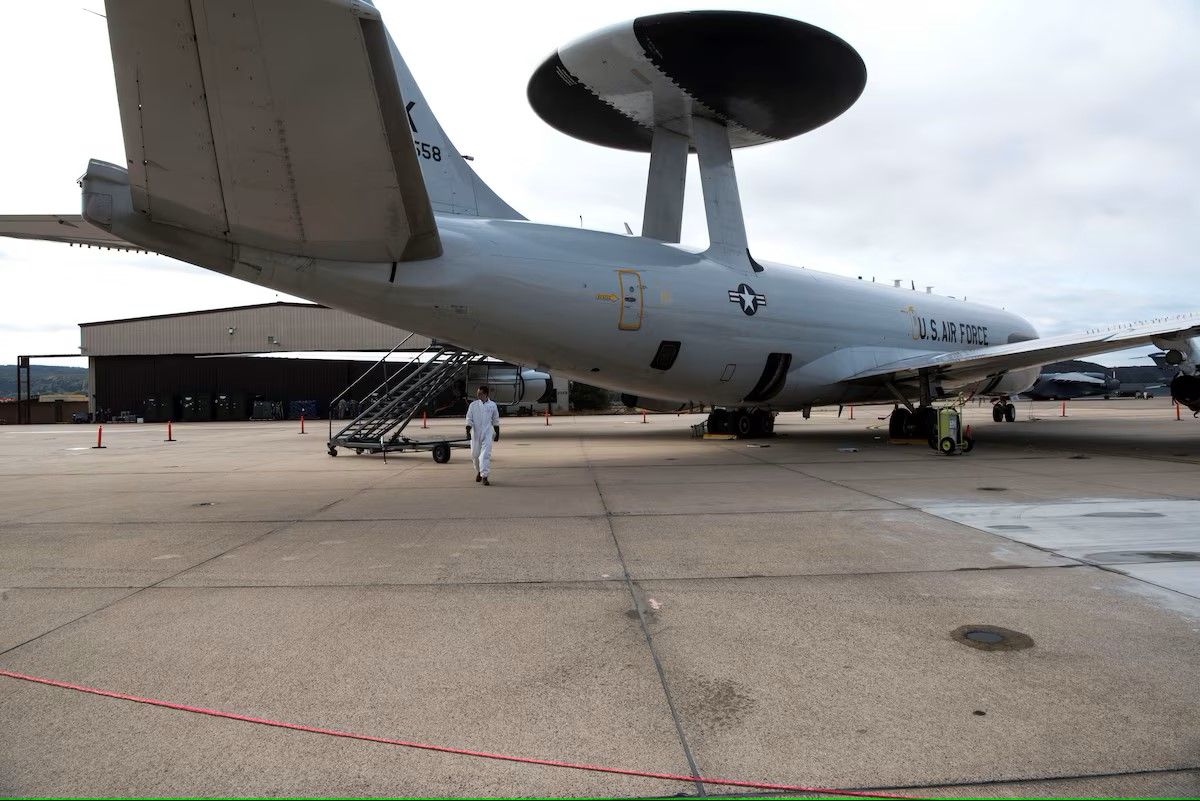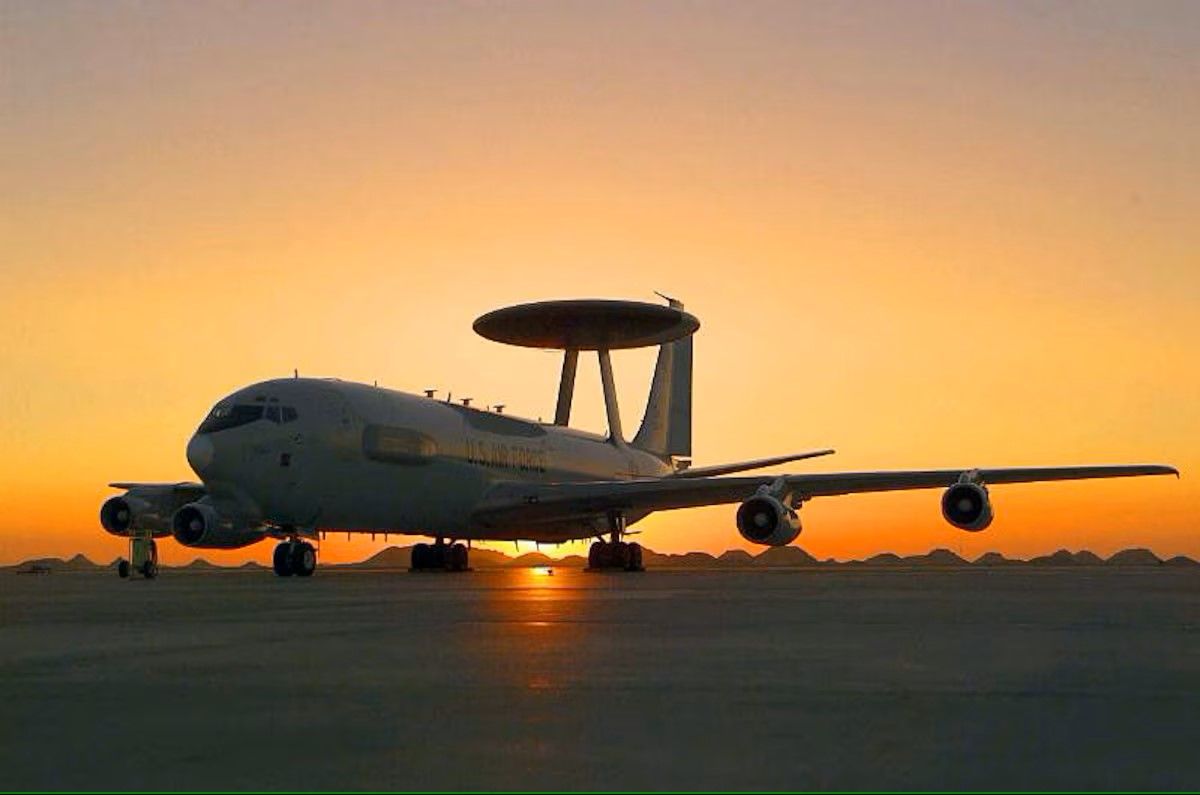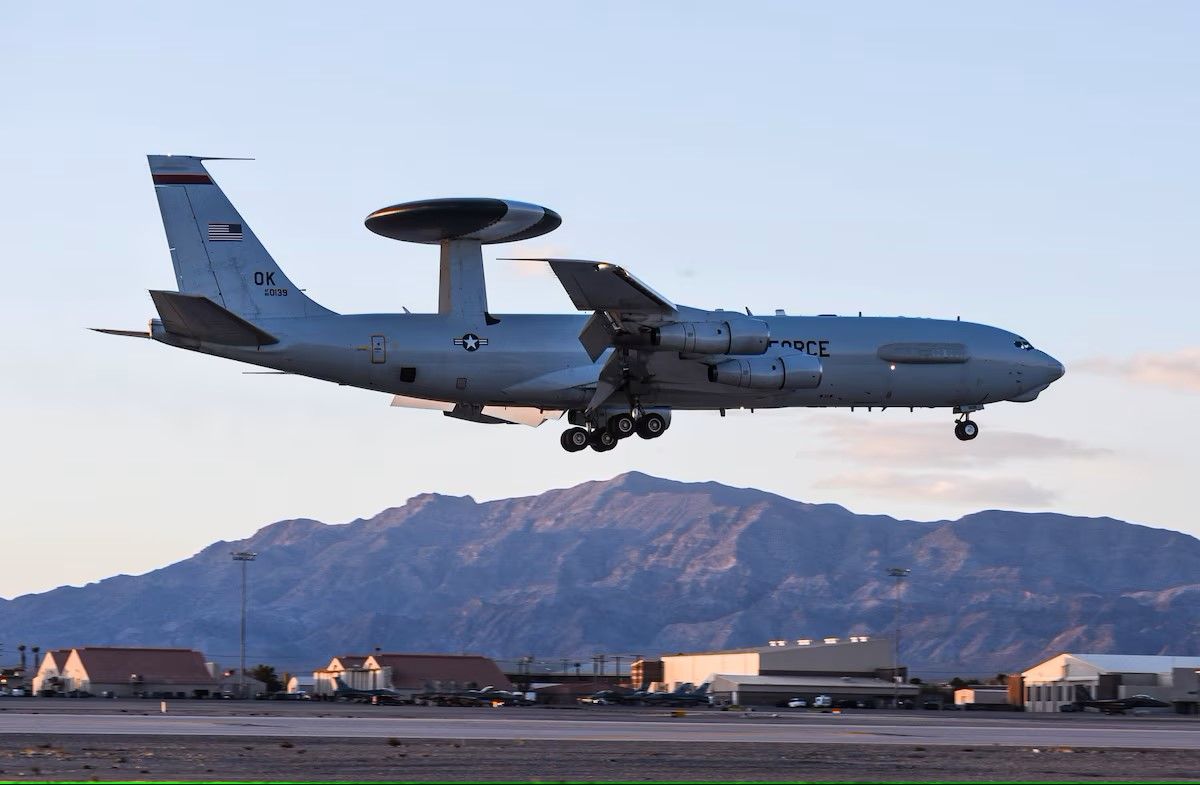Summary
- The Boeing E-3 Sentry is an AWACS aircraft based on the 707-320B platform, with 68 units produced between 1977 and 1992, and still in service today.
- 61 of the 68 produced units are still in operation, distributed among the US, NATO, UK, France, Saudi Arabia, and Japan.
- The E-3 Sentry features a rotodome radar, Northrop Grumman-built AN/APY-1/2 AWACS radar, and can stay airborne for eight hours and fly for 5,000 NM (9,250 km) without refueling.
The Boeing E-3 Sentry is an Airborne Warning and Control System (AWACS). These aircraft are based on the 707-320B commercial airliner platform and were introduced into operation in 1977. 68 units were produced between 1977 and 1992. The aircraft are still in service today and are an important part of military operations. The Air Force expects to operate the platform until 2035, when the Boeing E-7A Wedgetail will replace it.
The numbers
According to the US Air Force, out of the 68 units produced, 61 are still in operation.
They are distributed accordingly:
- US Air Combat Command: 27
- Pacific Air Forces: 4
- NATO: 17
- United Kingdom: 7
- France: 4
- Saudi Arabia: 5
- Japan: 4
The Japanese E-3s are unique and built on the 767 platform. They were introduced in 2000 and manufactured after the 707-based E-3s went out of production. They have capabilities identical to those of their 707-based counterparts.
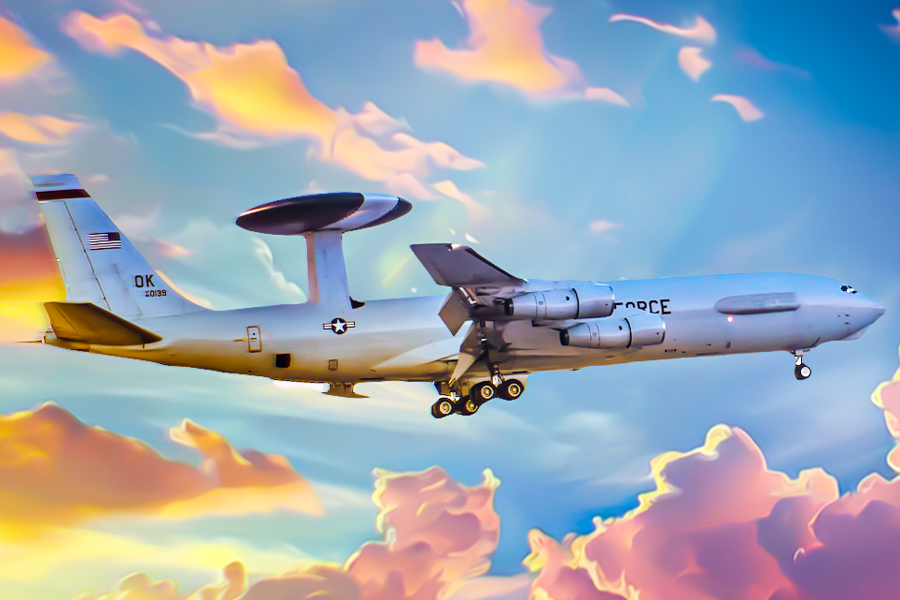
Related
What You Need To Know About The USAF E-3 Sentry Military Jet Radar
The E-3’s capabilities increase its mission readiness and survivability.
The aircraft
E-3 Sentry AWACS are easily identifiable by a rotodome (a large rotating radar housed in a dome) mounted on struts on top of the fuselage towards the tail end of the aircraft. The dome is 30 ft (9.1 m) in diameter and six feet (1.8 m) thick. The struts elevate the dome 11 feet (3.33 m) above the aircraft’s fuselage.
The surveillance equipment housed in the dome is the Northrop Grumman-built AN/APY-1/2 AWACS radar. It allows the E-3 to provide information over land or water, from the Earth’s surface to the stratosphere, which has a range of 250 miles (375 km). The top-down scans of the aircraft allow the E-3 to easily identify aircraft in terrain that would clutter other ground-based radar systems. It is used with an identification friend or foe (IFF) system to identify enemy aircraft.
An AWACS provides all-weather surveillance, early warning, command, control, and ground and air operations communications. The information can easily be transmitted to command and control centers on the ground or aboard ships and if needed, the President and the Secretary of Defense.
The aircraft can also transmit and receive data via satellite datalinks as part of a larger system with other command and control aircraft and systems. It can also record an entire air war, a first for any aerial command platform.
The aircraft can stay airborne for eight hours and fly for 5,000 NM (9,250 km) without refueling. This can be increased using airborne refueling.
The aircraft is equipped with Northrop Grumman AN/AAQ-24(V) DIRCM (Directional Infrared Countermeasure) defense systems. The system defends against modern IR-guided missiles. It simultaneously jams all IR threats, preventing the missile from targeting the aircraft. The system is used on over 1,500 aircraft platforms, from small aircraft to helicopters. Northrop Grumman was paid $104.6 million to equip the fleet with the system.
According to Airforce Technology, the aircraft is operated by a four-person flight crew: two pilots, an air navigator, and a flight engineer. E-3A models use 13 mission officers, while the E-3B and C have 18.
Specifications
According to the US Air Force, the specifications of the Boeing E-3 Sentry are as follows:
| Boeing 707 E-3 Sentry | |
| Length | 152 ft 11 in (46.6 m) |
| Height | 41 ft 9 in (13 m) |
| Wingspan | 145 ft 9 in (44.4 m) |
| Maximum Takeoff Weight | 325,000 lbs (147,418 kg) |
| Zero Fuel Weight | 205,000 lbs (92,986 kg) |
| Fuel Capacity | 21,000 US gal (79,494 L)¹ Or 23,907 US gal (90,500 L)² |
| Operational Time (without aerial refueling) | 8 hours |
| Range | 5,000 NM (9,250 km) |
| Ceiling | 29,000 ft (8,788 m) |
| Cruise Speed | 360 mph (Mach 0.48) |
| Engine(s) | 4 x Pratt & Whitney TF33-PW-100A turbofan engines with 21,500 lbf¹ or 4 x CFM International CFM-56-2A-2/3 turbofan engines with 24,000 lbf² |
| Flight Crew | 4 |
| Mission Crew | 13 – 19 |
Notes:
- 1 – USA and NATO models
- 2 – Saudi, UK and French models
Upgrades and modifications
The E-3 Sentry has been in service for 47 years, which is exceptional, especially for military aircraft that must be equipped with cutting-edge technology to remain competitive. The USAF and other operators of the E-3 have kept these aircraft in the fight by consistently upgrading the platform with new and improved surveillance equipment and avionics upgrades.
Photo: U.S. Air Force
The first upgrades were introduced in 1999 through the Radar System Improvement Program, a joint US/NATO development program that heavily upgraded and modified the existing radar system and enhanced the capability of the E-3 electronic countermeasures. The program cost $1.32 billion, improved the system’s reliability, and made maintenance easier.
The next upgrade came in 2006. The modernization program, named Block 30/35, included upgrades that introduced GPS navigation, joint tactical distribution system (JTIDS) Class II terminal installation, and electronic countermeasures.
The AWACS recently underwent a modernization program called Block 40/45. The program represents a monumental jump for AWACS and worldwide Joint Command and Control, Battle Management, and Wide Area Surveillance. The upgrade is considered the most significant counter-air battle management improvement in history.
The mission computers being installed as a part of the Block 40/45 upgrades include new display upgrades with an open system, new hardware, and software, which will greatly improve the AWACS mission capability.
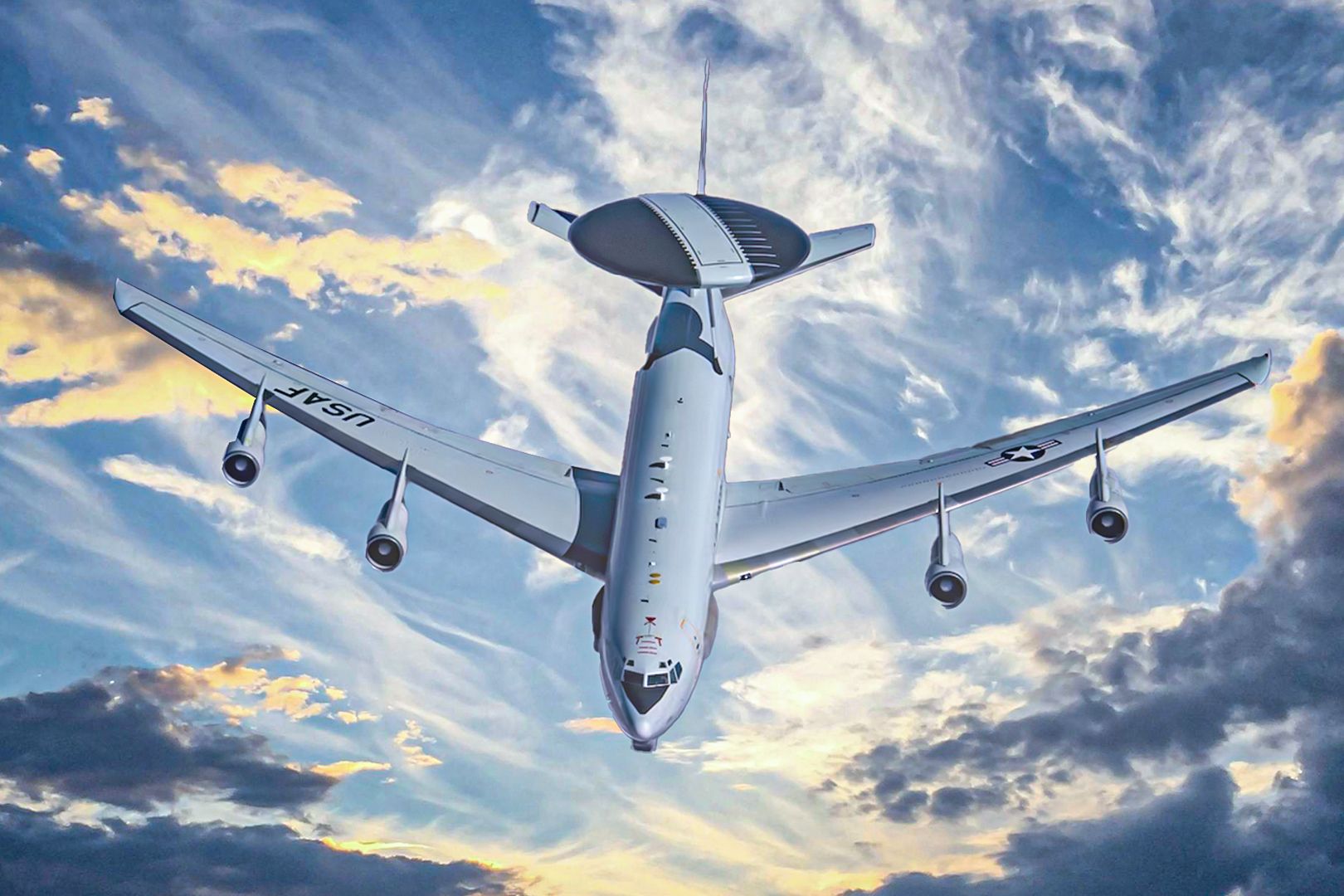
Related
How Does The E-3 Sentry AWACS Enhance USAF Command And Control?
Unlike JSTARS, AWACS is showing no signs of being ready for retirement.

